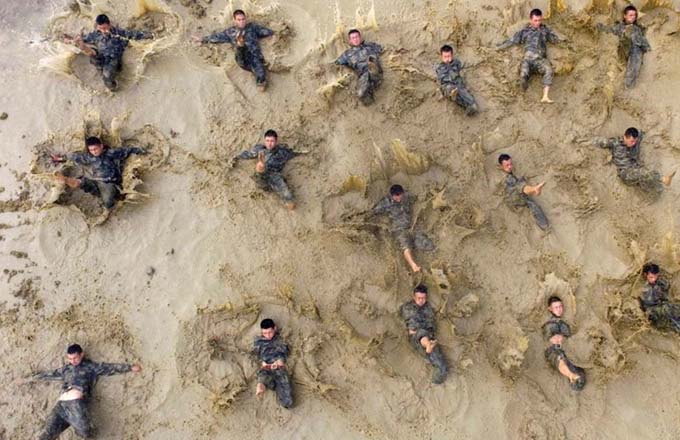Lead clothing protects doctors facing radiation during surgery
Around 8:30 am on Wednesday, Liu Ya, 38, put her hair into the surgical cap and other doctors helped her put on the 15-kilogram lead clothes before she went into the surgery room for an operation at the Chongqing Cancer hospital.
After putting on the lead clothes, Liu's movements got slightly slower, and she habitually raised her shoulders several times, seemingly trying to release the weight a little from her body.
Finishing preparations, Liu started the operation according to the plan made the day before. She had to walk between the monitoring equipment and the operating table many times during the over hour-long operation.
Liu left the patient to the anesthesiologist after completing her part and sat down to have a rest. The surgery required a lot of concentration, and she felt almost exhausted.
However, after resting in the chair for about ten minutes, Liu had to get up and quickly take a shower in a bathroom next to the surgery room. She had to put on the lead clothes again for the next operation that would be held about 20 minutes later.
It is necessary for doctors to wear lead clothes in the minimally invasive surgery because they are in the radiation environment while using the X-ray imaging technique, said Mao Mingwei, director of the imaging department of the cancer hospital.
The lead clothes include a cap, glasses, neck collars, gloves undergarments and aprons. Doctors have to wear them during the operation for one to even three hours due to different situations of patients.
But for convenience, doctors wear few lead parts on their face, lower legs and arms leaving them slightly exposed to the X-ray radiation environment during the operation.
The radiation level to the protected body parts of doctors equals the level of taking chest radiographs two or three times, and the unprotected body parts amounted to about 100 times, Mao said.
Three doctors have to share about 400 such surgeries a year, he said.
There is no absolute safety for these doctors, and sometimes, they even did their work without the lead clothes.
Two years ago, Liu had to work with other surgeons in a liver cancer patient's operation because of the patient's complicated situation. An accident happened after Liu finished her work while other surgeons continued, the chemotherapy rod Liu put in the liver moved slightly. At that time, Liu had taken off the lead clothes, but she returned to the room to put the rod back without wearing them.
Liu said that operation was a "light" one because she had done it without wearing the lead clothes but also a "heavy" one, having to save a patient's life.
The minimally invasive surgery doctors are usually in this dangerous environment, and their levels of white blood cells always get close to the lowest level of normal range around 4,000/L. The low level of white blood cells lowers the human ability to cope with disease.
Also, human cells will have variants under radiation and the abnormal fetal birthrate will increase. Thus, doctors on invasive surgery usually already have had their children and used to work in the imaging department.
The rays cause more damage to ovaries and prostates than other organs, and that is why, doctors have to wear lead underwear. Plus, the surgery room usually has a thick lead door.
Mao and Liu also wear special cards during their work to measure the radiation levels. The cards will be handed over to the center for disease control to identify if they receive the radiation at a safe level.
They will receive compulsory physical examinations out of their hospital once every two years, testing their white blood cell levels. If their white blood cells are not at a safe level, they would be asked to stop the work.


















